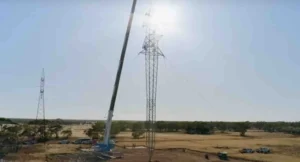Federal government owned utility Snowy Hydro will be allowed to dispose of dirt and rock produced by the construction of the Snowy 2.0 project in the Kosciuszko National Park, in a deal slammed by environmental groups who say it amounts to using the national park as a dump.
A ministerial briefing prepared for NSW energy minister Matt Kean has revealed that Snowy Hydro will be allowed to dump millions of tonnes of spoil from the tunnels built for the Snowy 2.0 pumped hydro project within the Kosciuszko National Park, in return for effectively amounts to peppercorn fee of just $1.65 million.
Critics say the “token” payment amount to a subsidy of $1.5 billion compared to what it would cost using commercial dumping rates.
Planning documents for the Snowy 2.0 project show that an initial estimate of 9 million cubic metres of excavated rock is expected to be produced from the project’s works. Snowy plans on disposing of half of this excavated material in either the Talbingo or Tantangara reservoirs, with the remaining material used in related civil works.
The briefing paper, tabled in the NSW Legislative Council following the passage of an order for the document to be produced, showed that a total of 7 million cubic metres of spoil – estimated to amount to 18 million tonnes of dirt and rock extracted through new tunnelling operations – would be dumped within the Kosciuszko National Park itself under a deal with the National Parks and Wildlife Service.
The $1.65 million payment would be made as compensation for the environmental impacts, and the ministerial brief says that “a condition of approval requires that spoil landforms are designed to fit into the natural landscape and be constructed and rehabilitated to a high ecological standard.”
“$1.65 million in spoil compensation, will allow [National Parks and Wildlife Service] to significantly improve catchment health, strengthen ecosystems, protect threatened species and communities and deliver long-term strategic conservation benefits for [Kosciuszko National Park],” the briefing paper says.
The environmental impacts of the Snowy 2.0 development, which has involved the drilling of new tunnels and the construction of new overhead transmission lines through the Kosciuszko National Park, has attracted stiff criticism from environmental groups.
The National Parks Association of NSW says the impacts of the concessional spoil dumping arrangement would diminish the quality and health of the Kosciuszko National Park. It says the NSW government is effectively subsidising the dumping of the spoil by charging such a small fee to Snowy Hydro as compensation for the damage.
“Not only is disposing of tunnelling spoil in a national park reprehensible, we now know that the NSW Government will receive barely 1/1000th of commercial waste disposal rates,” executive officer of the National Parks Association of NSW Gary Dunnett said.
“The agreement by the NSW Government equates to just 9 cents for every tonne dumped in Kosciuszko National Park, compared to commercial rates upwards of 80 dollars a tonne. And that’s excluding the cost of transporting all this waste,”
“The token payment by Snowy Hydro is effectively a $1.5 billion subsidy to Snowy Hydro Ltd by the State of NSW,” Dunnett added.
The briefing document shows that a total area of 630 hectares within the Kosciuszko National Park is expected to be disturbed by the construction works relating to the Snowy 2.0 project, including 532 hectares of native forest vegetation. The predicted impacts have led to the National Parks Association of NSW, and a number of key energy and environment experts, to express their opposition to the Snowy 2.0 project, arguing that it is the wrong project to build within a national park.
“NPA, along with numerous experts, opposes the Snowy 2.0 development in Kosciuszko National Park because it doesn’t stack up environmentally, technically or financially. But if it is going ahead, Snowy Hydro Ltd must pay the full cost of the project without hidden subsidies,” Dunnett added.
“NPA calls on the NSW Government to tear up this ill-conceived deal and negotiate a contract that goes some way towards reflecting the massive damage inflicted by industrial scale dumping in Kosciuszko National Park.”
The briefing paper shows that Snowy Hydro will also be required to pay $82.3 million compensation for other biodiversity impacts of Snowy 2.0 construction works on the Kosciuszko National Park, $6.96 million for recreational impacts and a further $43.4 million to support fish species within the Snowy Hydro scheme also impacted by the construction works.
In a statement, Snowy Hydro said that the disposal of the spoil was in line with an Environmental Impact Assessment approved by the NSW government.
“The placement of excavated material from the Snowy 2.0 construction was comprehensively assessed in the project’s exhaustive Environmental Impact Statement assessment process, which was approved by the NSW government,” Snowy Hydro said.
“Strict conditions around spoil disposal have been set as part of the approval process which we are fully complying with. Snowy 2.0 is a project vital to Australia’s energy transition through the delivery of reliable and affordable clean energy to the National Electricity Market.”








